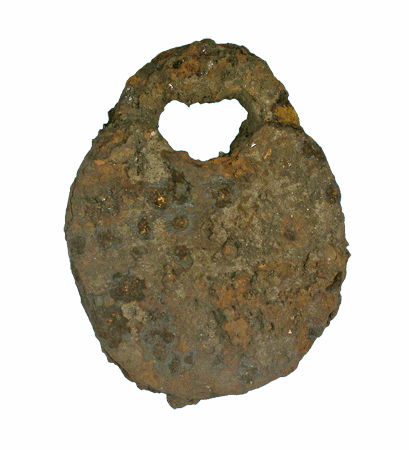X-radiography of Archaeological Objects
Archaeological objects are typically x-rayed for several reasons:
1: To identify corroded objects: X-radiographs can reveal surfaces and shapes obscured by thick layers of corrosion and burial soil. Maker’s marks or inscriptions, details, holes, tool marks and other forms of decoration can be identified in an x-radiograph. Different types of metals can also be identified if they are present.
2: To assess the condition of an object: areas of corrosion, cracks, wear, and other types of weakness are very obvious on a properly exposed x-radiograph.
3: To document an object: not all objects can be completely conserved, or may be preserved in an unconserved state for future study. X-radiographs are a good way to capture an image of an object at a point in time. This image can be compared to images taken in the future to determine if objects continue to degrade in storage.

19th-century iron padlock


